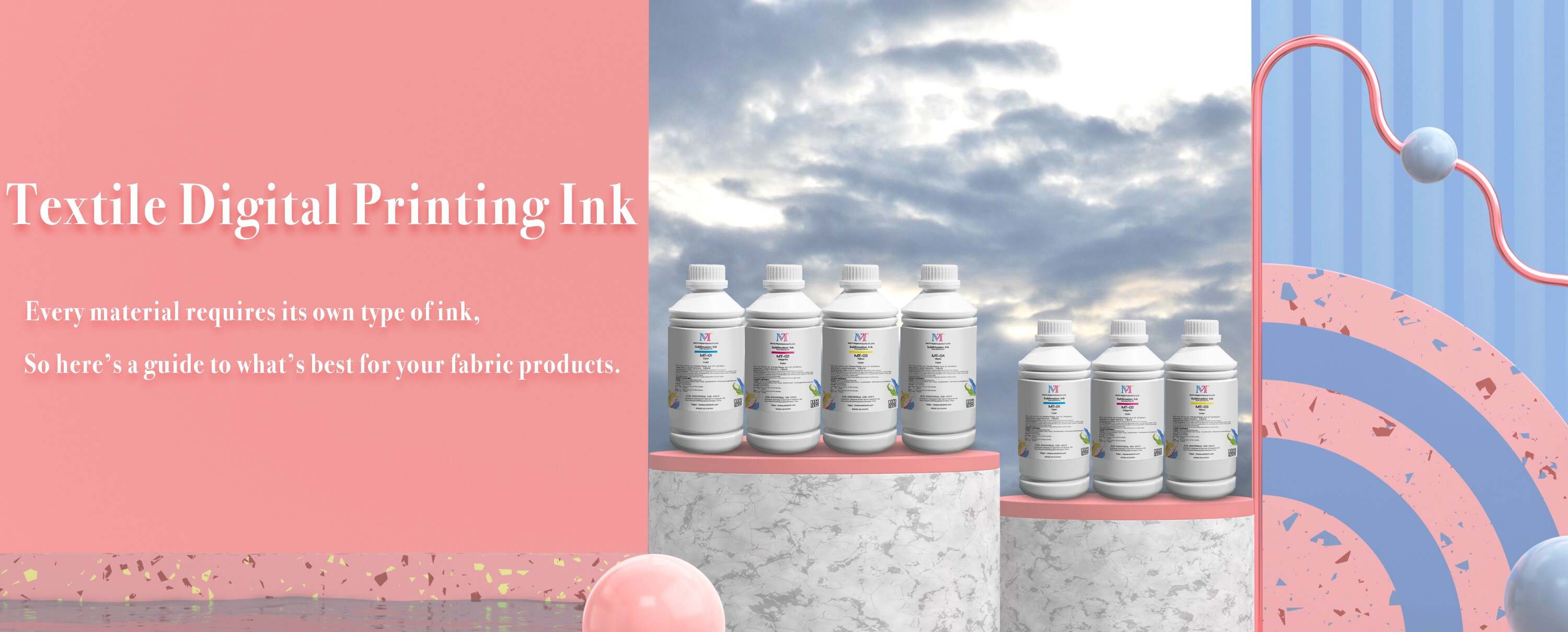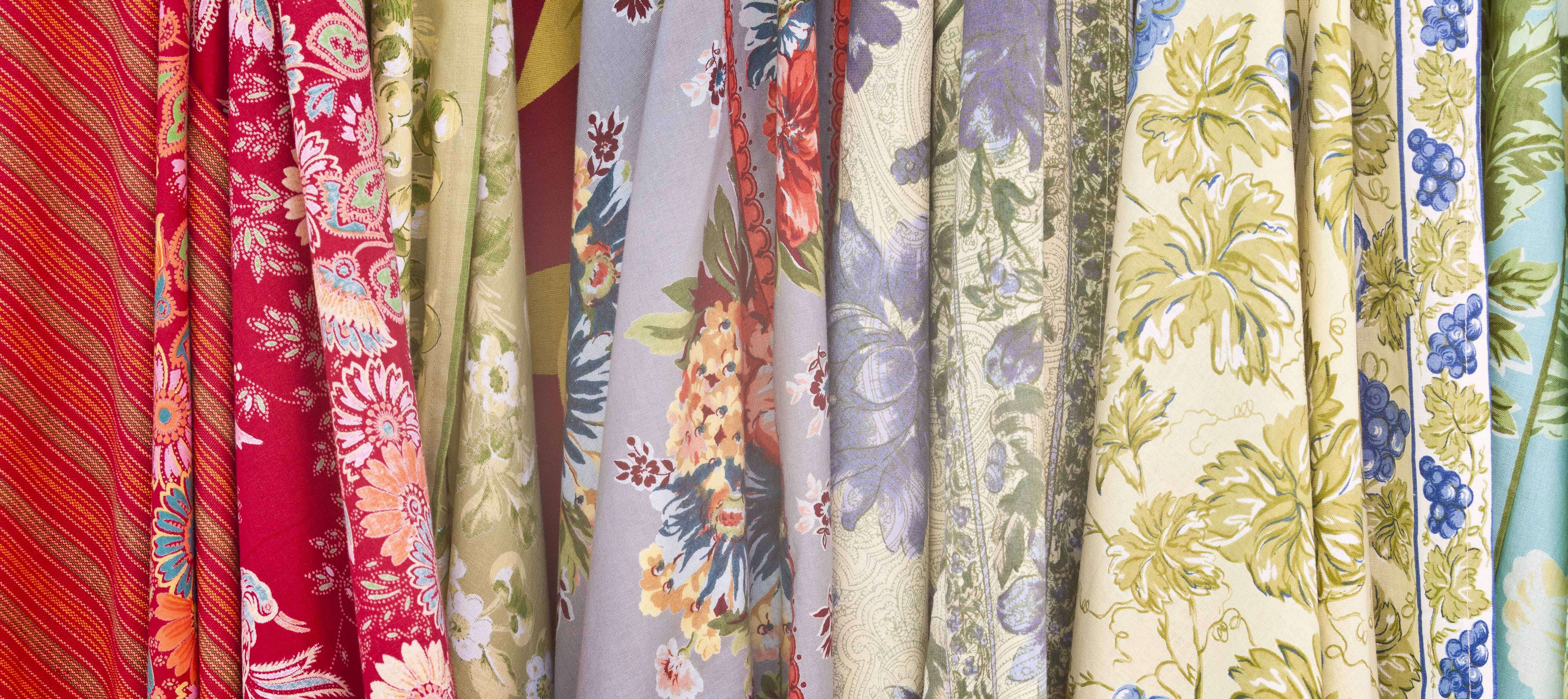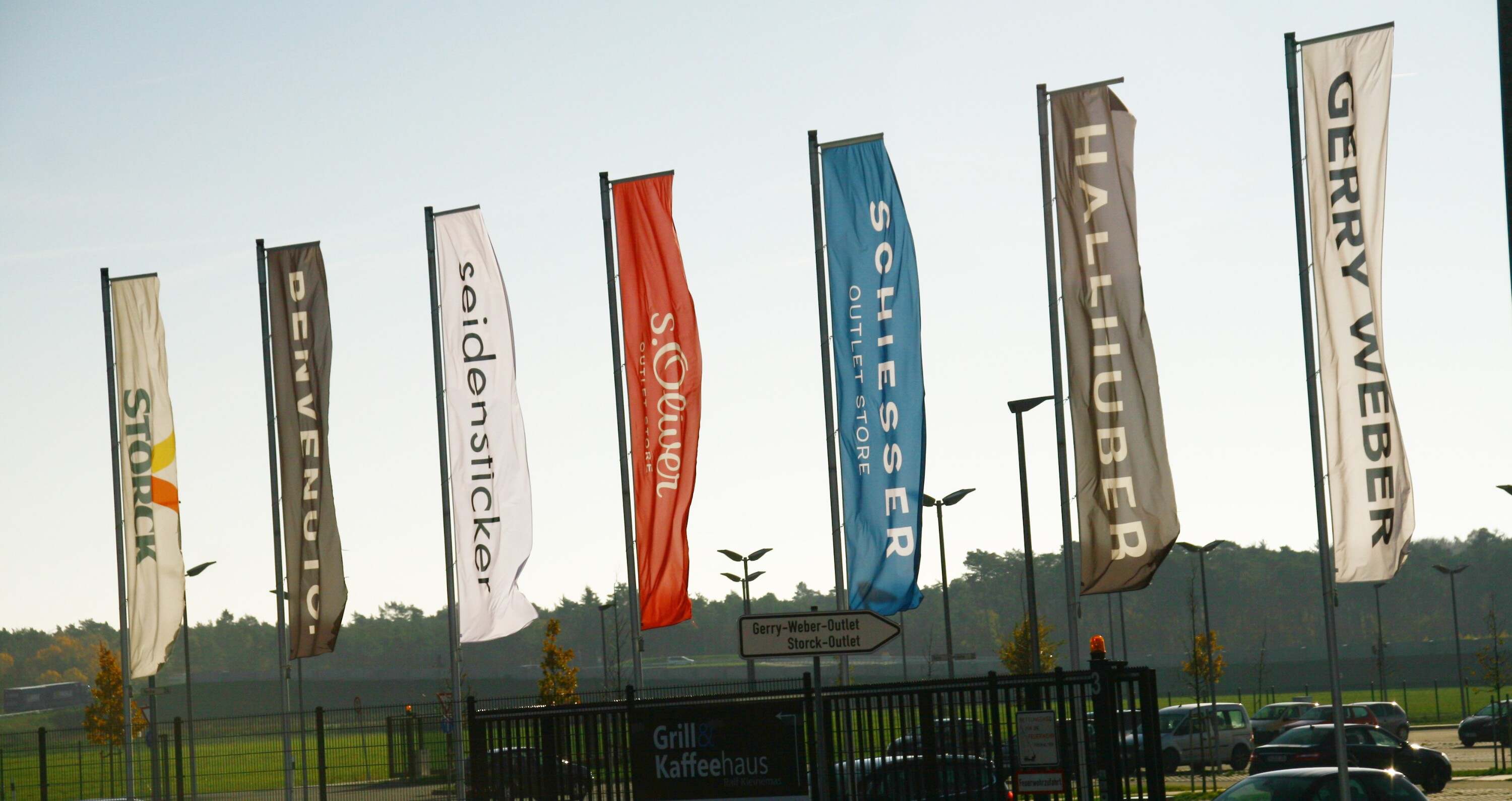
Today textile printing is one of the fastest growing areas of wide format and industrial printing. Part of the reason is that textile printing is really an umbrella term that encompasses different types of fabrics, from synthetics to natural materials, and applications ranging from soft signage to sportswear, fashion apparel and homewares. Each material requires its own type of ink, which in turn determines the level of pre- and post-processing required.
This article will take you through everything you need to know about digital printing inks for textiles so you can choose the ultimate perfect ink for your product and ensure you get the most out of your fabric.
There are four main categories of textile digital printing inks:
1. Sublimation ink
The most common type of textile ink for most wide-format printers is sublimation ink, a printing method often used to transfer designs onto fabrics and materials with polymer coatings. This type of ink uses water as the carrier solution. The sublimation process is activated by heat, evaporating the remaining water and converting the dye into a gaseous state. The heat also forces the polymer fibers to open, driving gas into the material so that when the fabric cools, the fibers close and the color becomes embedded within them. This helps the material maintain its look and feel and withstand multiple wash cycles.
The advantage of this type of ink is that it can produce high-quality, durable, full-color printing on polyester fabrics, which is widely used in sportswear, soft signage, and some home decoration applications.
However, sublimation inks belong to the broader category of disperse dye inks. Dispersion inks are generally classified as low energy, medium energy or high energy. Dye-sublimation can be classified as a low energy disperse dye ink, while most disperse inks usually refer to the higher energy versions. Like sublimation, this ink fixes color with heat and is best suited for polyester, polylycra and nylon, but can also be used on acetate and acrylic in some cases. Disperse inks often achieve good washfastness and lightfastness, making them suitable for outdoor applications including outdoor furniture and even automotive interiors. As a result, many high-volume printers targeting the apparel and home furnishings markets are turning to disperse dye inks.
To summarize, the biggest advantages of acid ink are:
Vibrant and long-lasting color
Multifunctional full color printing
Simple workflow saves time, water and energy
Printing workflow using sublimation ink
Using sublimation ink in the printing process requires two steps:
Step 1: Print
Use an inkjet printer to print the design on sublimation transfer paper using sublimation ink.
Step 2: Image Transfer Printing
Good transfer paper and polyester fabric are processed through a calender. The calender enables the ink to migrate to the fabric.
2.Acid ink
The next ink to consider is acid inks. Acid dyes are used to dye protein fibers such as wool and silk, but can also be used in polyamide, cashmere and angora wool. Other inks can be used for silk and wool, but in general acid dye inks are more suitable for producing vibrant and colorfast prints on these fibers due to their high chlorine and salt water tolerance because the dyes in the ink form ionic bonds with the fibers, forming Strong and durable connection. Excellent color retention even after multiple washes. These inks are typically used in applications that require intricate detail and a wide color gamut.
To summarize, the biggest advantages of acid ink are:
High color quality
High wash fastness
High chlorine and salt water tolerance
Printing workflow using acid inks
Using acid ink in the printing process requires five steps:
Step 1: Preprocessing
Prepare the fabric by pre-treatment.
Step 2: Print
Print your design using an inkjet printer equipped with acid ink.
Step 3: Steam
Fix the ink to the fabric.
Step 4: Clean
Wash away any remaining pretreatment and ink residue.
Step 5: Finish (optional)
Post-processing is applied and the results are finalized.

3. Reactive ink
Similar to acid ink, both are made from dyes and have similar properties. Reactive ink is a type of ink used in textile printing processes. These inks are typically used on cotton as well as materials such as linen, nylon, and rayon. When textiles are steam-treated, this chemical reaction ensures that color molecules bind to the fibers, resulting in intensely vibrant colors that are resistant to washing and rubbing, as well as some resistance to sweat.
This type of ink is particularly popular for its ability to create complex and detailed designs on textiles, while maintaining good color fastness and high wash fastness. They are commonly used in applications that require high-quality, long-lasting printing, such as fashion textiles, home textiles, and other fabric products. Reactive Ink has the widest product range from entry level to high luxury fashion level.
To summarize, the biggest advantages of reactive ink are:
High color quality
High wash fastness
Ideal for fashion
There is virtually no difference between the printing workflow for reactive inks and acid inks.
Two types of inks, acid and reactive dye, are best suited for pretreating materials. They need to be steamed after printing, which creates a reaction that forces the dye into the fiber. After this process, these prints must be washed to remove any residue from the ink. They should be washed at least twice, starting with cold water and then hot water to ensure that all unfixed color has been removed. In some cases, it is best to apply heat by drying and ironing after washing to extend the life of the print.
4. Pigment ink
Finally, there are pigment inks, suitable for cotton and natural fibers, including polyester-cotton blends, but also available in linen, rayon, silk, wool, nylon, and polyester. Unlike dye inks, which dissolve into the print media, pigment inks contain solid colorant particles suspended in a liquid carrier. These colorants are highly lightfast to environmental factors, making pigmented inks a popular choice for applications where durability and longevity are important.
Commonly used in a variety of printing applications, including textiles, graphics and industrial printing, pigmented inks are capable of producing a wide color gamut and accurate color reproduction. This means they can capture a wide range of shades and tones with high color accuracy. Pigmented inks do not require cooking and cleaning, reducing water and energy use and making them more sustainable.
To summarize, the biggest advantages of pigment ink are:
High light fastness
High durability and long life
High color accuracy and wide color gamut
Printing workflow using pigment inks
Using pigment inks in the printing process requires four steps:
Step 1: Preprocessing (optional)
Preparing the fabric by applying pre-treatment
Step 2: Print
Print your design using an inkjet printer equipped with pigmented inks
Step 3: Curing
Polymerize ink onto fabric
Step 4: Finish (optional)
Apply post-processing and finalize results

Ultimately, inevitably, a compromise needs to be made between the amount of pre- and post-processing required and the overall quality of the print and its longevity. Any additional processing steps will inevitably increase costs, but for high-value products such as scarves and other fashion items, this may be justified. Regardless, MT is able to offer different digital fabric printer products as well as ink options so that customers can diversify their business by running multiple printers of a similar type, each configured with a different ink set for specific fabrics and applications.




